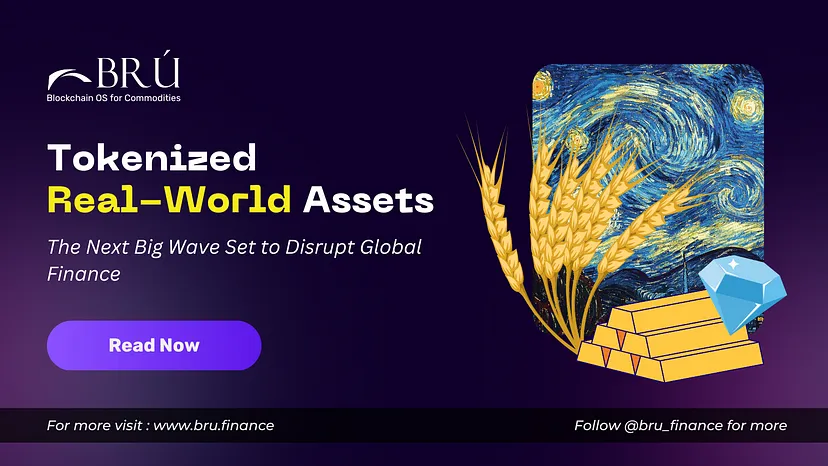
Tokenized Real-World Assets: The Next Big Wave Set to Disrupt Global Finance
Published On :12 September, 2024
A familiar trend is making a comeback: the tokenization of real-world assets (RWAs). In 2018, there was a widespread belief that everything could be tokenized and traded on blockchain, with security token offerings (STOs) becoming popular. However, the excitement was short-lived.
While the real value of these projects is up to market interpretation, secondary markets now exist, where tokens act as bearer instruments on Bitcoin. Given the growing alignment between proof-of-work and proof-of-stake advocates, RWA tokenization appears poised for the next phase of growth.
Even BlackRock CEO Larry Fink remarked last year that tokenization represents “the next generation for markets,” highlighting its potential to transform assets like real estate, loans, and even U.S. Treasuries into digital instruments.
Tokenization 2.0
Despite successful initial sales, many projects stalled, largely due to the unfulfilled promises of STOs to democratize investments, increase efficiency, and cut costs. Issues like low liquidity, limited secondary markets, and burdensome regulations relegated STOs to the background.
However, tokenization is rising from its early failures, ready for more serious business this time around. What’s changed? In 2018, tokenization lacked the utility and ecosystem adoption needed for success. Today, the thriving DeFi ecosystem offers the infrastructure to support tokenized assets.
Since its inception, token issuance has evolved, each iteration attracting a broader audience of crypto investors who weigh the risks and opportunities. Like a sinusoidal wave, adoption has had its highs and lows. While tokenization still faces challenges, the market’s growing appetite for risk highlights its potential. The movement of capital, akin to osmosis, flows from areas of high concentration to lower ones, facilitated by crypto on-ramps like exchanges, ETFs, and ordinal platforms.
The major hurdle for RWA tokenization is the uncertain legal landscape. Converting assets like real estate or gold into tokens could classify them as securities, bringing regulatory challenges that dampen the benefits of utility tokens. There’s also the issue of verifying the authenticity of the assets backing these tokens. In a decentralized, trustless crypto world, users are naturally skeptical, making it harder to build trust in asset-backed tokens.
Yet, with sufficient government backing, especially in democratically legitimate jurisdictions, these challenges can be overcome. As crypto and finance become more intertwined, investors may feel more comfortable with government-backed tokenized assets.
But there’s a paradox at play. RWAs tend to be stable, making them less attractive to crypto traders who thrive on volatility. Low volatility leads to reduced trading activity and less liquidity, which in turn discourages traders and market makers. Without this self-reinforcing cycle of liquidity, the economic incentive to issue RWA tokens weakens.
For more updates and latest news about Brú Finance, please join our Twitter Channel, Discord server, LinkedIn, Telegram at
Please join our Discord events and Twitter AMAs to connect directly with our founders and ask your queries.
Discord: https://discord.gg/8C9SZXDy2r
Telegram Channel : https://t.me/bruofficial
Twitter : https://twitter.com/bru_finance
LinkedIn : https://www.linkedin.com/company/bru-finance/
Facebook :https://www.facebook.com/brufinance/
Instagram :https://www.instagram.com/brufinance/?igshid=YmMyMTA2M2Y%3D

 1.png)